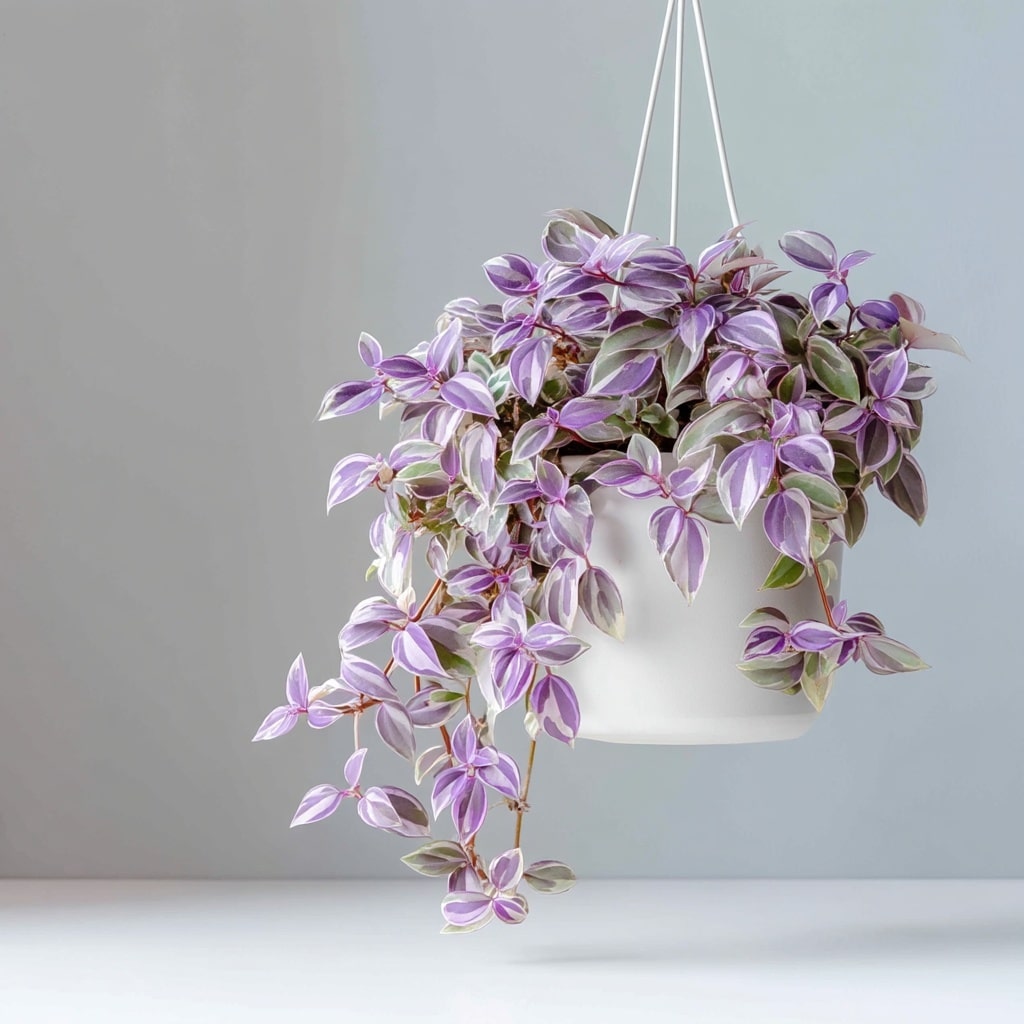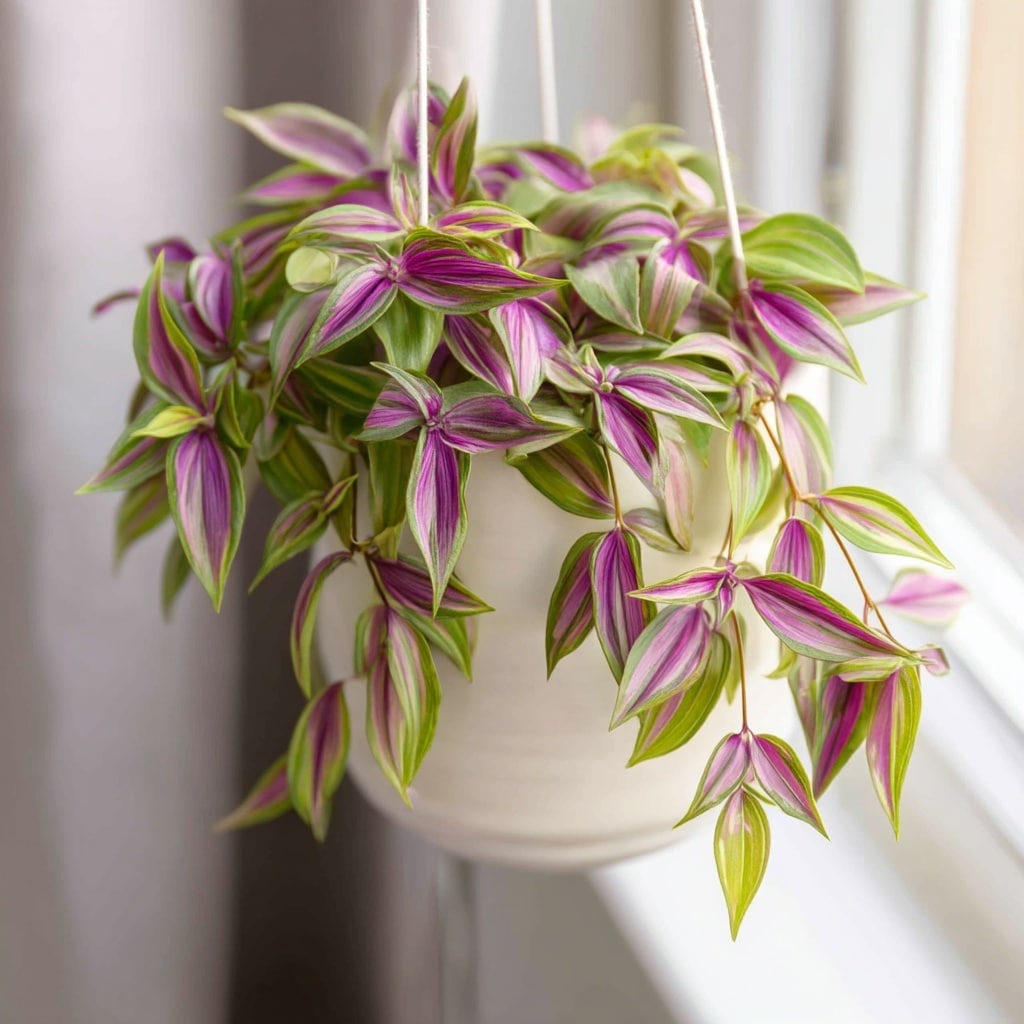Hanging plants are a simple, stylish way to add life and greenery to your home—without taking up precious floor or shelf space. Whether you live in a small apartment or a spacious house, these plants bring softness, movement, and a natural vibe to your indoor decor.
From leafy vines that spill over baskets to textured ferns that add vertical interest, hanging plants can transform dull corners into lush, inviting spaces. Even better? Many are easy to care for, making them a great choice for plant beginners and seasoned indoor gardeners alike.
In this guide, we’ll look at the best hanging plants for indoors—beautiful, low-maintenance options that thrive in a variety of home environments.
Table of Contents
Wandering Jew (Tradescantia zebrina)
If you’re after bold color and fast-growing vines, the Wandering Jew is a standout among hanging plants. Its deep purple and green striped foliage adds dramatic flair to any room, especially when allowed to trail freely from a hanging basket or wall-mounted planter.
This plant is more than just good looks—it’s also a reliable, low-maintenance choice. It thrives in bright, indirect light, which helps maintain its rich coloring and compact growth. Water it when the top inch of soil feels dry, usually two to three times a week depending on humidity and sunlight exposure.
Wandering Jew is also forgiving. It rebounds quickly from occasional neglect and grows rapidly, making it a fun plant to prune, shape, and even propagate. A few cuttings in water will root within days—perfect for sharing or expanding your indoor jungle.
Lilac Wandering Jew (Tradescantia fluminensis ‘Lilac’)
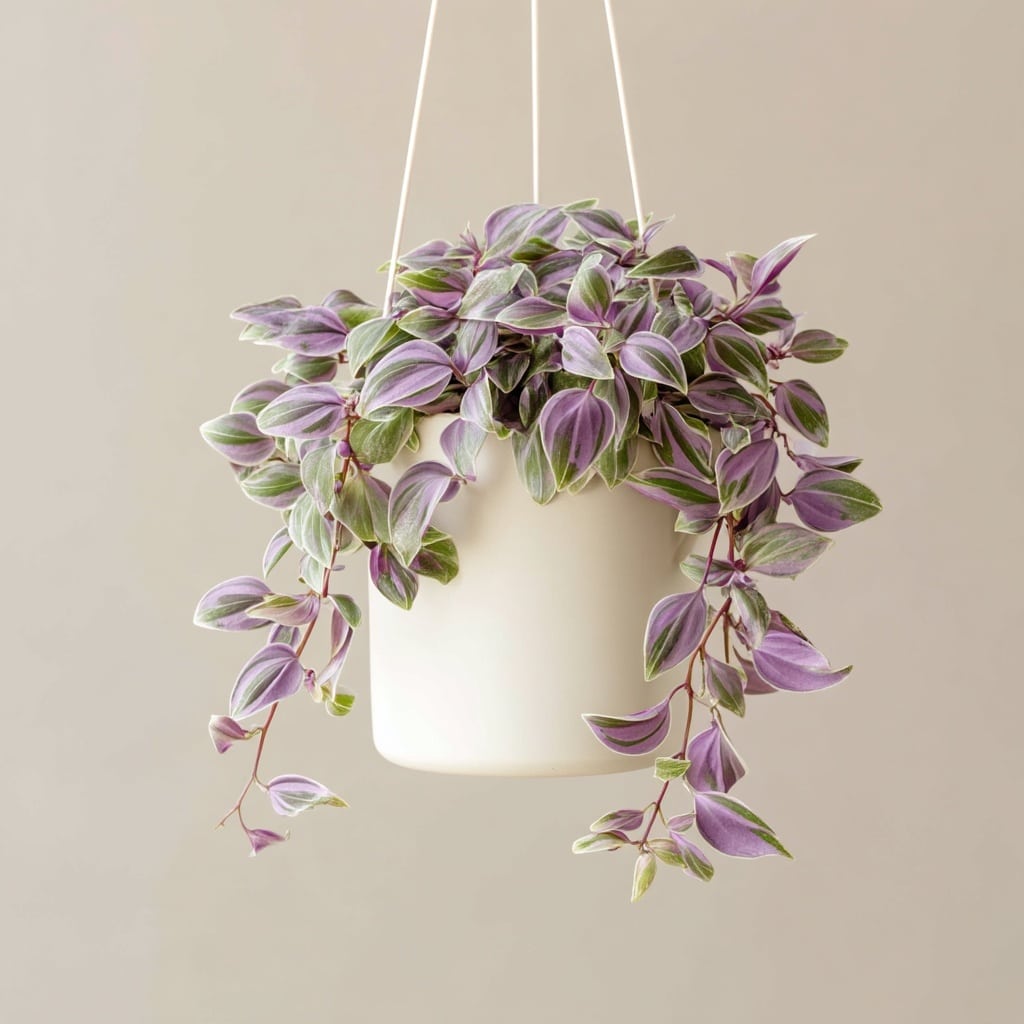
For a softer, more pastel-toned option, the Lilac Wandering Jew is a beautiful twist on the classic variety. Its delicate foliage blends pale green with soft lilac or silvery-purple hues—making it a favorite for minimalist or Scandinavian-inspired interiors.
Like its more vibrant cousin, this hanging plant loves bright, indirect light. Too little sun and the color may fade; too much direct sun and the leaves can scorch. With the right lighting, though, its variegation will stay vivid and eye-catching.
Water it when the soil feels slightly dry, and be sure the pot drains well. It enjoys moderate humidity and occasional pruning to keep its vines full and lush.
Whether styled in a hanging planter or cascading over a floating shelf, the Lilac Wandering Jew brings subtle color and graceful movement into your space—all with very little effort.
Turtle Vine (Callisia repens)
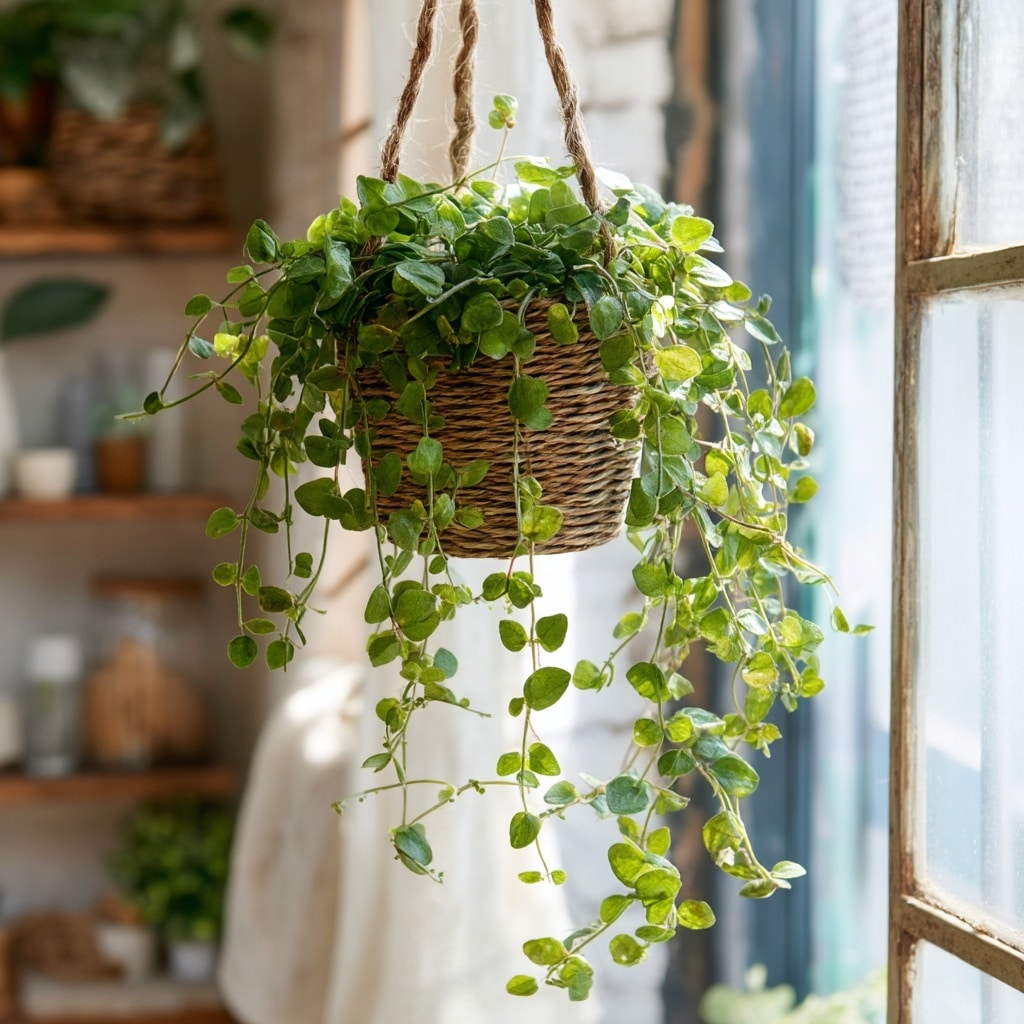
The Turtle Vine is one of the most adaptable and fuss-free hanging plants you can bring into your home. With its small, round, green leaves and delicate trailing stems, it creates a dense, cascading look that works beautifully in compact spaces or as a filler among larger indoor plants.
This plant doesn’t demand much. It thrives in bright, indirect light, but can tolerate lower light conditions better than many other hanging plants. The more light it gets, the fuller and faster it grows. Its compact size and rapid spread make it ideal for windowsills, bathroom corners, or even hanging from curtain rods.
Water moderately—once or twice a week is usually enough. Let the top layer of soil dry out before watering again, and avoid soggy soil to prevent root rot.
Turtle Vine is a great pick for anyone looking for hanging plants that are easy to care for and quick to reward you with fresh growth.
Asparagus Fern (Asparagus densiflorus)
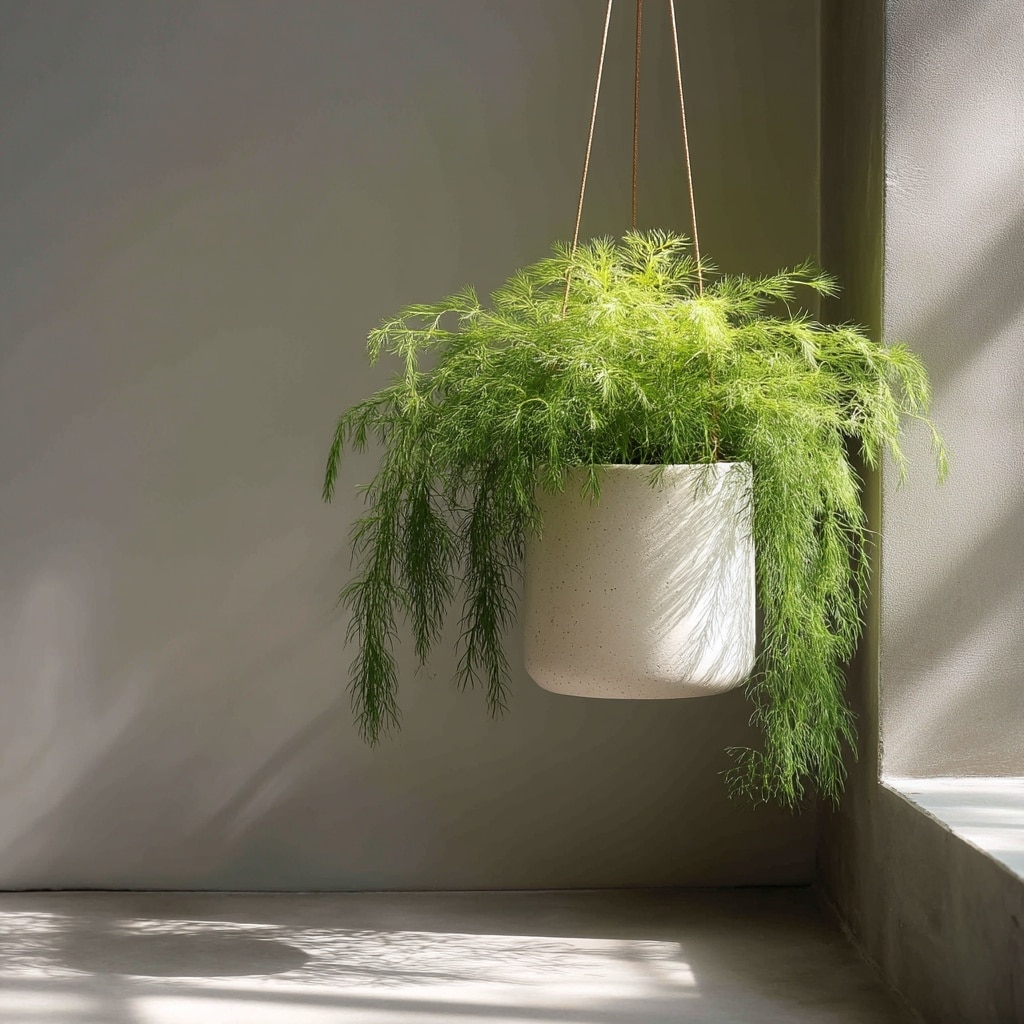
If you’re after texture and softness, the Asparagus Fern adds a feathery, elegant touch to your collection of hanging plants. With its fine, needle-like leaves that cascade down in light, airy trails, it creates a whimsical, almost cloud-like effect—perfect for bright kitchens, bathrooms, or reading nooks.
Despite its delicate look, the Asparagus Fern is fairly hardy. It prefers bright to medium indirect sunlight and will burn if exposed to direct rays for too long. The plant appreciates consistent moisture, but not soggy conditions—water once or twice a week, and adjust based on the room’s humidity.
This fern does well in slightly humid environments, so it’s a great fit for naturally damp rooms or near a humidifier. Its roots grow quickly, so you may find yourself repotting it every year or so to keep it healthy.
With just the right balance of care, the Asparagus Fern will reward you with fast, elegant growth that adds softness and depth to any space.
Golden Pothos (Epipremnum aureum)

When it comes to beginner-friendly hanging plants, the Golden Pothos is hard to beat. Its heart-shaped leaves—splashed with golden yellow and green—trail gracefully from baskets, shelves, or macrame hangers, instantly brightening up any room.
Golden Pothos thrives on neglect. It grows well in low to bright indirect light, making it ideal for homes with varying light conditions. It tolerates occasional missed waterings, dusty corners, and even inconsistent humidity. Just let the top inch of soil dry out before watering again, usually once a week.
This vine is also one of the best plants for purifying indoor air, according to NASA studies. Its vines can be trimmed to control growth or encouraged to trail long distances for dramatic effect. It’s happy in a hanging basket by a window, atop a high shelf, or trailing from a bathroom planter.
Whether you’re just starting your plant journey or adding to an established indoor garden, Golden Pothos offers beauty, resilience, and low-maintenance charm all in one.
Conclusion
Adding hanging plants to your home is one of the easiest ways to create a more inviting, lively space—without taking up precious floor space. From the colorful vines of the Wandering Jew to the soft textures of the Asparagus Fern, there’s a hanging plant suited for every room, light condition, and design preference.
Even better, most of these plants are low-maintenance and beginner-friendly. With the right balance of indirect light, occasional watering, and proper drainage, your hanging plants will thrive and continue to grow beautifully for years to come.
Whether you’re creating a calming corner with trailing greenery or turning a dull wall into a vertical garden, these plants are a practical, affordable way to elevate your interior decor naturally.

